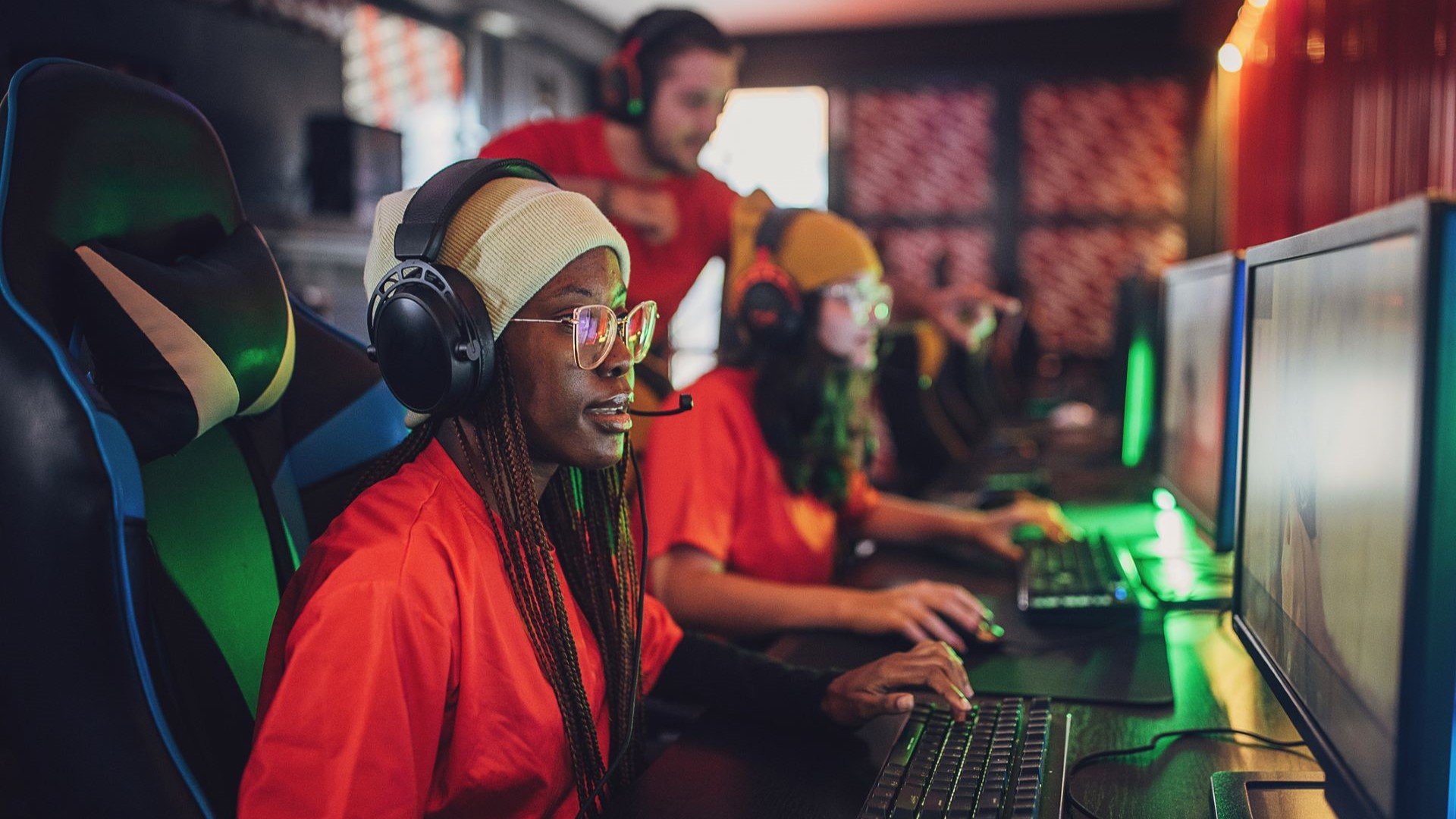Esports in Higher Education: Prepare Your Institution

Institutions benefit from increased visibility, revenue, and recruitment generated by the team-based electronic gaming (esports) industry. Students participating in esports may experience increased discipline and academic improvement. Yet schools also grapple with important concerns, including how to structure programs and how to address risks such as sex discrimination, bullying and harassment, and negative health impacts.
Program Structure and Oversight
Many institutions followed Robert Morris University — the first institution to field a varsity esports team and provide esports scholarships — and some offer degrees in various aspects of esports.
Consider these questions:
Where will the program reside?
Some institutions house esports under Athletics, but others put their programs under Student Affairs or an academic unit such as engineering or computer science.
Will the program be recognized at a varsity level?
Varsity programs officially represent your institution, receive direct financial support (for example, for facilities, equipment, and uniforms), and include scholarship players. Most institutions with varsity programs belong to the National Association of Collegiate Esports (NACE). Although NACE has a constitution and bylaws that cover issues like student recruitment and eligibility, its enforcement ability is murky.
Other institutions classify esports as a club activity, which tends to mean even less oversight.
Esports are not governed by the NCAA, which so far has maintained a “hands-off” policy to collegiate gaming, in large part because of its unique nature. While the NCAA’s position ensures flexibility for esports, it means a lack of clear regulatory authority. And despite the NCAA’s current position on esports, nothing prevents it from revisiting the issue in the future. Institutions should monitor developments.
How will your institution recruit gamers?
For NACE members, effective August 2020, annual “Intent to Compete” letters (similar to NCAA letters of intent) are required. Otherwise, no particular external recruiting regulations exist. Institutions should consider developing internal rules consistent with their recruiting practices for other sports.
How will the institution handle the monetary aspects of esports?
While esports scholarships have been far less valuable than mainstream athletic scholarships — most are partial, worth $500 to $8,000 per year — their rapid growth is similar to that of collegiate esports overall. A few institutions offer full tuition esports scholarships, and this is likely to increase as the popularity of gaming rises.
However, the source of scholarship money is often unclear. Some funding comes from institutions, but a significant portion likely originates with game developers and publishers, which often award scholarship money, sometimes in addition to prize money, at the collegiate tournaments they sponsor. In addition, the companies may subsidize expensive gaming equipment on campuses, which is especially beneficial to club teams that would otherwise have to cover those costs with student fees.
Institutions should consult counsel and understand the possible legal consequences of the arrangement before entering agreements with or accepting funding from third parties.
Does your institution have a policy for determining when students are gaming for the institution?
Institutions have limited ability to regulate gamers who play on their own time — unless they violate a specific policy or code of conduct provision. Institutions have greater latitude to act when gamers represent them.
Sex Discrimination
Sex discrimination, including sexual harassment, is a serious problem in professional esports.
Men dominate organized esports at the highest levels, with estimates of female participation as low as 5%. Female gamers and analysts often attribute the low rate to persistent sexual harassment and a toxic environment for women in the professional gaming industry.
For higher education institutions, Title IX — which forbids discrimination on the basis of sex in programs that receive federal funding — is a potentially significant issue for esports programs. Potential liability has two primary sources. First, for esports housed in Athletics, Title IX requires that men and women have equal access to opportunities to participate. The Department of Education (ED) has a prescribed test for institutions participating in intercollegiate athletics to show representation of the sexes in their programs complies with Title IX. While ED’s Office for Civil Rights (OCR) hasn’t addressed treating esports as intercollegiate athletics, in 2023 a federal judge ruled that esports don’t qualify as athletics for these purposes and Title IX doesn’t apply.
The sexualized content of some games and the harassing behavior of some gamers is a second source of potential Title IX liability. Institutions can do little about objectionable content — other than refuse to sanction particular games in their esports programs — because third-party developers own and control the games and content. But institutions have significant control over misconduct by their students and should take appropriate actions to prevent and respond to it.
Consult legal counsel for specific advice about your institution’s Title IX obligations.
Standards of Conduct
Electronic gaming lends itself to anonymous bullying and harassment. A 2019 study by the Anti-Defamation League found 65% of online gamers experienced harassment online, including stalking and threats of violence. Over half reported harassment on the basis of a characteristic such as gender or race. Schools should review their codes of conduct, especially those applicable to online behavior, and ensure they explicitly cover esports programs.
Health Considerations
The intensity of competition can cause chronic health issues. One study found collegiate gamers averaged three to 10 hours of daily practice; over half of them reported eye fatigue and 42% reported neck and back pain, yet few sought medical treatment. Other frequent problems include repetitive motion injuries to the wrist or hand. Among professional gamers, mental health is a concern, with players frequently “burning out” in their mid-20s.
Institutions should make athletic trainers as accessible to gamers as to mainstream athletes, limit gaming time when students represent the institution, and train employees working with gamers to recognize signs of injury, exhaustion, or stress.
About the Author
-

Hillary Pettegrew, Esq.
Senior Risk Management Counsel
Hillary’s areas of expertise include employment law, Title IX, and study abroad issues. Before joining the Risk Research team, she practiced employment law and handled UE education liability claims.